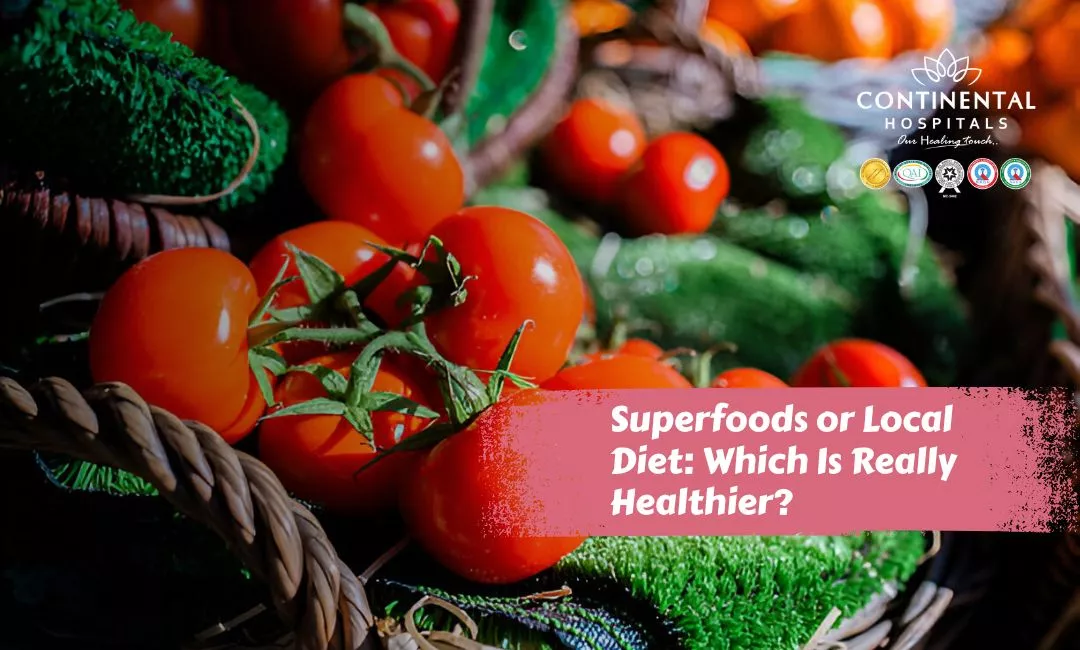The word “superfood” gets a lot of attention in health magazines, social media, and grocery store aisles. From quinoa to chia seeds to kale, these foods are often marketed as nutritional powerhouses that can transform your health. But here’s the question: are imported superfoods really better than the traditional, locally available foods we’ve eaten for generations? Or is our local diet just as good, if not better, for long-term health?
What Exactly Are Superfoods?
Superfoods are foods that are considered especially nutrient-rich. They are often promoted as having health benefits beyond basic nutrition. Examples include blueberries, quinoa, avocados, chia seeds, and matcha. The idea is that these foods are packed with vitamins, minerals, antioxidants, and other compounds that support overall health.
The problem is that the term “superfood” is not a scientific classification. It’s more of a marketing term used to make certain foods sound superior. While many of these foods are healthy, they are not magical or irreplaceable. Often, their nutritional value can be found in similar or even better quantities in local, seasonal foods.

🥗 Healthy Plate Challenge
🍽 Add Your Favorite Dish
Pick Your 6 favorite foods, eat, and see the results.Drag & drop foods onto your plate.
Drop Food Here
The Power of Local Foods
India’s traditional diet is built on a foundation of local, seasonal produce, whole grains, legumes, and spices. Think of lentils, millets, spinach, drumstick leaves, turmeric, and amla. These foods have been part of our meals for centuries, supporting strong bones, good digestion, and disease resistance.
Local foods are usually grown in nearby regions, which means they are fresher, less processed, and often higher in nutrients by the time they reach your plate. They are also better suited to the local climate, which helps your body adapt and stay healthy.
Comparing Nutrition: Local vs Imported
Let’s look at a few examples:
Quinoa vs Millets
Quinoa is often praised for being high in protein and fiber. But millets like foxtail, barnyard, and finger millet offer similar protein content, are rich in minerals like calcium and iron, and grow abundantly in India.
Blueberries vs Amla
Blueberries are celebrated for their antioxidant content. Amla, or Indian gooseberry, has far more vitamin C and antioxidant power, supporting immunity and skin health.
Chia Seeds vs Flax Seeds
Chia seeds are rich in omega-3 fatty acids, but so are locally available flax seeds, which are more affordable and easier to find.
This comparison shows that you don’t always need exotic foods to get top-quality nutrition.
The Myth of “Exotic Equals Better”
A big myth in healthy eating is that foreign foods are automatically better for health. This belief is often driven by trends and marketing campaigns. The truth is, nutrition is not about where the food comes from, but what it contains and how often you eat it.
Imported superfoods often travel thousands of kilometers before they reach your kitchen. During this journey, they may lose some nutritional value. On the other hand, local foods are harvested and sold quickly, keeping their freshness intact.
Benefits of Choosing Local Foods
Better for Digestion
Local foods have been part of your region’s diet for generations, making them easier for your body to digest.
Fresher and More Nutritious
Because they travel less distance, local foods usually retain more vitamins and minerals.
Environment-Friendly
Eating foods grown nearby reduces the carbon footprint associated with long-distance transport.
Supports Local Farmers
Buying local produce strengthens the local economy and farming community.
Adapted to Local Climate
The nutritional profile of local foods often matches the needs of people in that region. For example, water-rich fruits in summer help prevent dehydration.
How to Build a Healthy Diet with Local Foods
A balanced diet does not need to be complicated. Here’s a simple guide:
Mix Whole Grains: Include rice, wheat, millets, and oats for a variety of nutrients.
Load Up on Seasonal Vegetables: Eat a colorful mix to get a range of vitamins and antioxidants.
Use Local Superfoods: Amla, turmeric, drumstick leaves, spinach, curry leaves, and sesame seeds are all nutrient-rich.
Add Legumes and Lentils: These provide plant-based protein and fiber for gut health.
Spice It Right: Turmeric, cumin, coriander, ginger, and black pepper not only add flavor but also have health benefits.
When Imported Superfoods Can Be Useful
There’s nothing wrong with including imported superfoods if you enjoy them and can get them fresh. For example, quinoa is a good option for people with wheat allergies, and avocados are a healthy source of fat. But they should not replace local options completely. The best diet is one that mixes variety with seasonal availability.
Diet Myths You Should Stop Believing
Myth 1: You need exotic foods for better health
Fact: Local foods can match or even surpass imported superfoods in nutrition.
Myth 2: More expensive means more nutritious
Fact: Price has nothing to do with nutrient content.
Myth 3: Traditional diets are outdated
Fact: Traditional diets are often balanced, time-tested, and tailored to your region’s needs.
The Bottom Line
The healthiest diet is one that is balanced, nutrient-rich, and sustainable. While superfoods have their benefits, they are not miracle cures. Local, seasonal foods provide the same nutrients, often in a fresher and more affordable form. Combining the best of both worlds is a smart way to eat well.
Why Choose Continental Hospitals for Nutrition and Diet Care
At Continental Hospitals, we understand that nutrition is not one-size-fits-all. Our team of experienced dietitians and nutrition specialists create personalized diet plans based on your health goals, medical history, and lifestyle. We focus on sustainable, practical eating habits rather than short-term trends. Whether you want to improve digestion, manage weight, control blood sugar, or recover from illness, we guide you with clear, evidence-based advice.
We combine the wisdom of traditional Indian foods with modern nutritional science to help you achieve lasting health. Our state-of-the-art facilities and patient-first approach ensure you get the care and support you need at every stage.
Conclusion
You don’t have to chase expensive, imported ingredients to eat healthy. Many of the foods grown in your own region are just as rich in nutrients and better suited for your body. By understanding what your body needs and choosing wisely, you can create a diet that keeps you healthy, energized, and strong. And with the right medical guidance, you can turn everyday meals into powerful tools for lifelong wellness.
If you suffer from digestive problems, nutrient deficiencies, or lifestyle-related health issues, consult our expert dietitians at Continental Hospitals to get a plan that works for you.
.webp)














